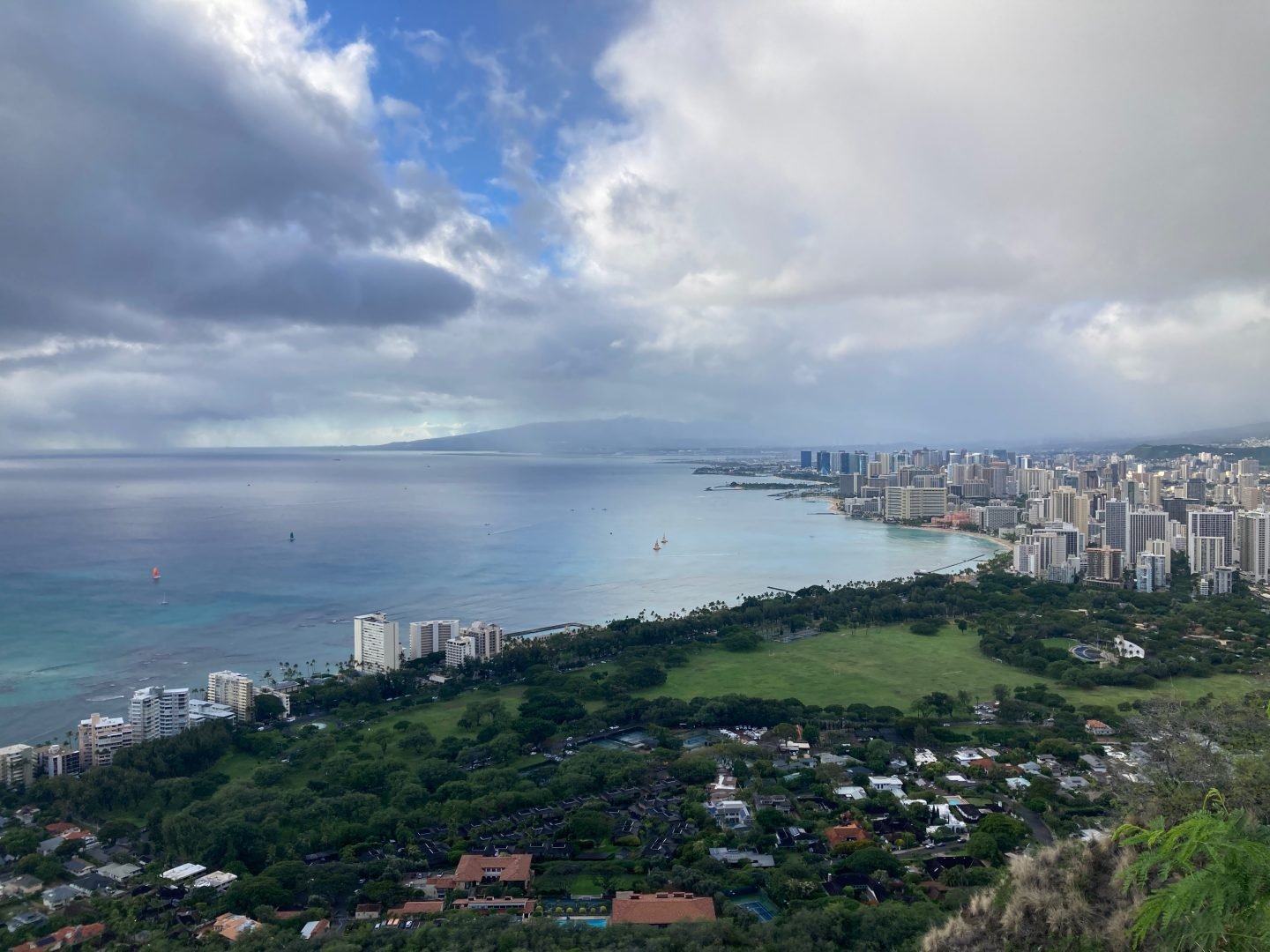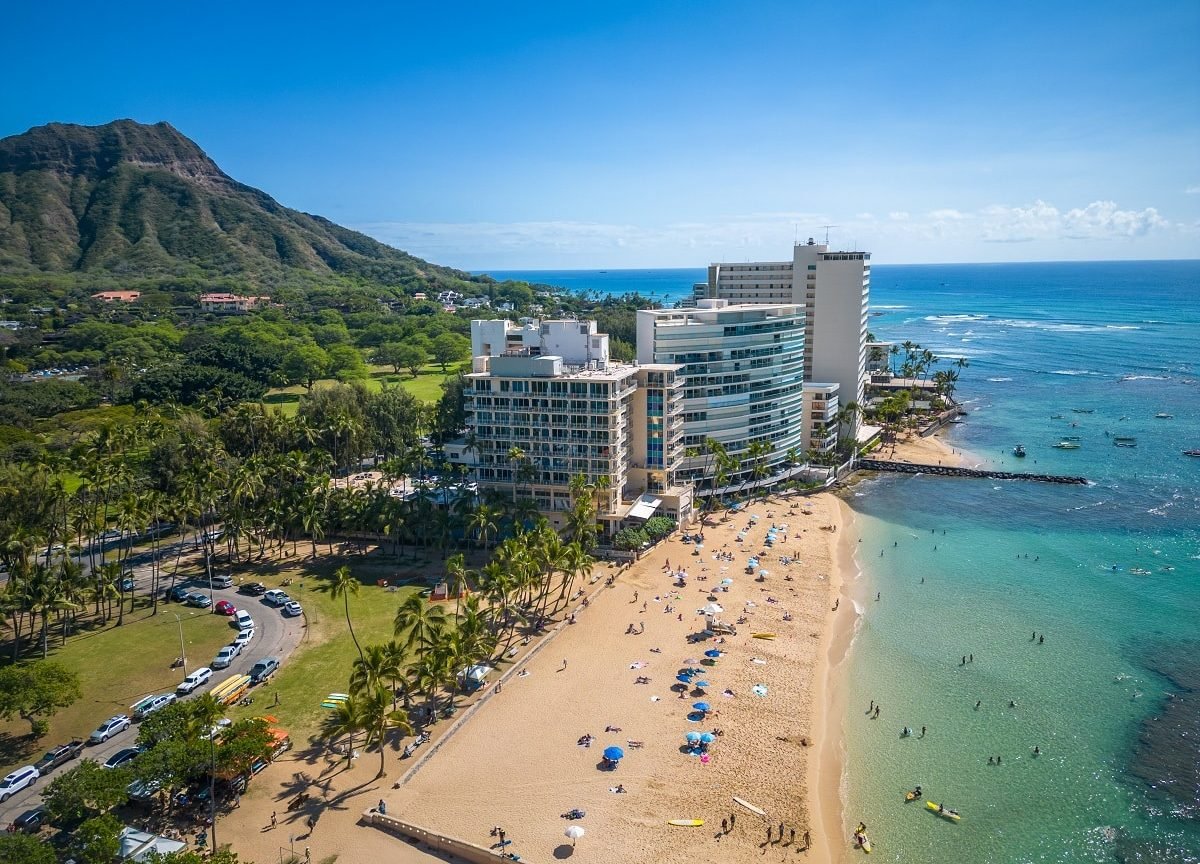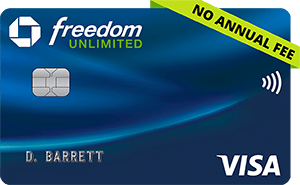The Best Times to Visit Hawaii
Hawaii is a paradise year-round, but seasonal swings (and a rainy season) can impact how to plan a Hawaii trip.

Many or all of the products on this page are from partners who compensate us when you click to or take an action on their website, but this does not influence our evaluations or ratings. Our opinions are our own.
With year-round highs in the 80s and average lows rarely dipping below 65 degrees, there’s really no bad time of year to visit Hawaii — but depending on why you’re visiting, some times can be better than others.
When is the best time to visit Hawaii? The answer depends on your travel budget, preferred activities, and when you and your family or travel companions can find time to get away.
Here is the best time of the year to visit Hawaii, no matter what kind of traveler you are.
For the frugal traveler
If you want to save money on a Hawaiian vacation, avoid going when kids are on break from school, especially during the winter holidays. In general, the cheapest time to visit Hawaii is when school’s in session.
The “shoulder months” of April, May, September and October are especially affordable, with round-trip flights from the West Coast sometimes dipping below $350 and round trips from the East Coast starting under $525 for flights with connections. Nonstops to Honolulu occasionally dip under $620 for East Coast travelers.
What if you’re paying with points or miles? One-way award flights, including from the East Coast, can sometimes be found for as little as:
- 20,000 American Airlines AAdvantage miles.
- 22,500 United MileagePlus miles.
- 17,000 Delta SkyMiles.
- 18,815 Southwest Rapid Rewards points.
- 30,000 Hawaiian Airlines HawaiianMiles.
Those same flights during peak travel times can cost quadruple those award rates, for example, 130,000 HawaiianMiles or 90,000 AAdvantage miles.
Hotel prices are lower in these shoulder months, too. For example, a basic room at the Waikoloa Beach Marriott Resort & Spa on the Big Island can skyrocket to over $930 per night during the peak winter travel season, but that same room might go for just $443 in October.
🤓 Nerdy Tip
Many Hawaiian hotels add a nightly resort fee from about $25 to $50 on top of the room rate, so make sure you budget accordingly. The same pattern holds true for more budget-minded travelers. A room at the Aqua Palms Waikiki that costs $329 during peak winter travel might cost $159 in early November.
» Learn more: How to visit Hawaii on a budget
For honeymooners

Hawaii can get very crowded, and in the past few years, travelers may find themselves in hourlong lines to check into their hotel, pick up a rental car or even get a table for sunset cocktails.
That’s hardly the vibe you want for your romantic escape.
Avoid the crowds by honeymooning in one of the shoulder months of April, May, September or October. Planning a June wedding? You can dodge the worst of the crowds by visiting earlier in the month before many kids are on summer break.
» Learn more: How to book a honeymoon with points and miles
For families seeking magical Christmas memories

In Hawaii, Santa dons a lei and ditches the sleigh — for an outrigger canoe. You can catch a glimpse of Saint Nick as he paddles ashore at several Hawaii destinations, which in past years have included Waikiki Beach on Oahu, Kalapaki Beach on Kauai and Pauoa Bay on the Big Island.

Hawaii’s hotels pull out all the stops for Christmas, decking their lobbies with glittering decorations, towering Christmas trees and elaborate sand sculptures. Among the best lobbies is the The Royal Hawaiian, a Luxury Collection Resort. Known as the "the Pink Palace of the Pacific" because of its iconic pink-painted exterior, the hotel leans into the pink vibes with pink Christmas trees throughout.

The Moana Surfrider, A Westin Resort & Spa also stands out. The historic property usually offers a Christmas-themed afternoon tea on the veranda. Inside the lobby sits on a massive Christmas tree, a charming Hawaiian-inspired gingerbread house and a place to write letters to Santa.
And if you’re heading to Oahu, don’t miss the sparkling Honolulu City Lights celebration, which kicks off downtown with a 50-foot Christmas tree and an electric parade of lights. The festival continues throughout December, with special events that in past years have included a Free Milk & Cookies Night.
» Learn more: How to travel to Honolulu with points and miles
For the beach lover

Yes, the weather is lovely year-round in Hawaii. But that doesn’t mean every month is equally good for sun-seekers. Rain is most likely to ruin your beach plans from October through March. Ocean water temps can dip down to 75 degrees Fahrenheit from January through March, compared with the balmy 81 degrees average water temperature in August. Plus, the days are shorter in winter, meaning fewer hours of sunshine.
For the best combination of sunshine, swimmable oceans and affordable rates, September is ideal.
🤓 Nerdy Tip
Is there rain in the forecast for your trip? Don’t worry. Brief, refreshing showers happen year-round in Hawaii and usually clear out quickly. Locals call these weather events “little blessings.” For the outdoor adventurer
Do hiking, cycling, ziplining and horseback riding sound like your kind of vacation? Hawaii is a fantastic place to get active, but summer afternoons can be too hot for many strenuous, land-based activities.
If you can’t hit the trail in the morning before the midday sun starts to blaze, avoid traveling to Hawaii in July, August or September. Opt for a trip in May, June or October instead.
» Learn more: The best island to visit in Hawaii for first timers
For the whale-watcher
If your Hawaiian travel plans include whale watching, you’re in luck — humpback whales are plentiful in the surrounding waters. Plan your trip in the cooler months, between December and May, when these massive mammals come to the waters around Hawaii to mate, calve and nurse their young.
A whale-watching boat tour can get you up close to these giants. But if you know where to go, you can see them from shore on any of the four major Hawaiian islands, especially in the channel between Maui and Lanai.
» Learn more: Should you island hop in Hawaii?
For history and special event lovers

Hawaii has a rich culture of annual events and festivals, many of which are worth making a visit specifically for. Among the best times to visit for special events include:
- June 11: King Kamehameha I Day.
- Third weekend of July: Prince Lot Hula Competition
- Throughout October: Hawaiʻi International Film Festival.
- Throughout November: Annual Kona Coffee Cultural Festival.
Some hotels go all out to add to the guest experience on these festive dates.
For example, the Lotus Honolulu at Diamond Head Hotel is offering a special package for King Kamehameha I Day in 2024 that includes transportation from the hotel to the area near Iolani Palace and the statue of King Kamehameha for the annual lei draping ceremony and parade. They'll even set up two chairs with prime parade viewing, as well as a basket of local snacks and drinks to nosh on.

What's the best times to visit Hawaii?
If you're determining when to visit Hawaii, decide what’s most important for your vacation and plan accordingly. Sun-seekers and ocean swimmers will want to avoid the winter months, when the water is cool and the risk of bad weather is highest. Cost-conscious travelers and honeymooners should plan travel in spring or fall. Whale watchers will need to visit in the winter months when the humpback whales congregate in the waters off all four major islands.
How to maximize your rewards
You want a travel credit card that prioritizes what’s important to you. Here are some of the best travel credit cards of 2026:
- Flexibility, point transfers and a large bonus: Chase Sapphire Preferred® Card
- No annual fee: Wells Fargo Autograph® Card
- Flat-rate travel rewards: Capital One Venture Rewards Credit Card
- Bonus travel rewards and high-end perks: Chase Sapphire Reserve®
- Luxury perks: American Express Platinum Card®
- Business travelers: Ink Business Preferred® Credit Card
Article sources
NerdWallet writers are subject matter authorities who use primary,
trustworthy sources to inform their work, including peer-reviewed
studies, government websites, academic research and interviews with
industry experts. All content is fact-checked for accuracy, timeliness
and relevance. You can learn more about NerdWallet's high
standards for journalism by reading our
editorial guidelines.
Travel Cards from Our Partners
Chase Sapphire Preferred® Card
Rewards rate 1x-5x Points
Intro offer 75,000 Points
Chase Freedom Unlimited®
Rewards rate 1.5%-5% Cashback
Intro offer $300
Capital One Venture Rewards Credit Card
Rewards rate 2x-5x Miles
Intro offer 75,000 Miles
More like this
Related articles










